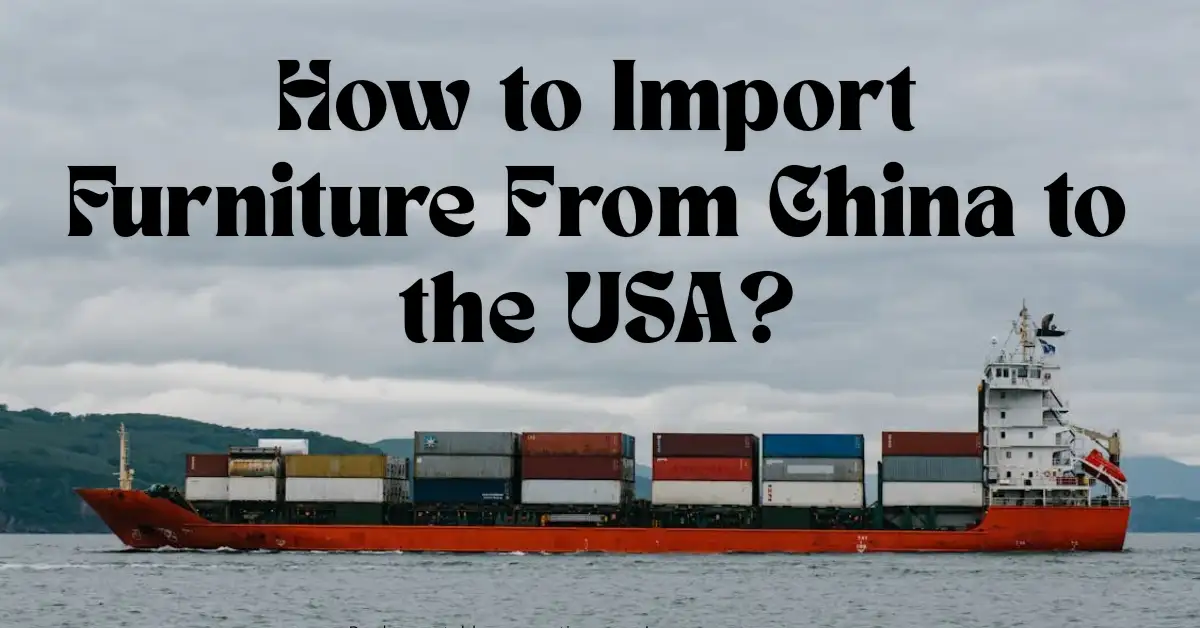How to Import Furniture From China to the USA?
The US furniture market often relies on Chinese manufacturers, bridging cost, style variety, and large volume capacity. But how do you handle the logistics and regulations? From supplier selection to US customs clearance, a strategic approach ensures a smooth journey.
Steps to Import Furniture From China to USA
Below, we outline key steps for importing from China to the USA.
Step 1: Supplier Vetting
- China hosts countless factories, some large, others small artisan workshops.
- Check references, sample pictures, or factory visits if feasible.
- For big orders, a factory’s scale matters, can they meet your quantity on time without sacrificing quality?
VISIT FOR :: sourcing companies in usa
Step 2: Freight Approach
- Sea freight is standard for heavy or large volumes, cost-effective but typically 4–6 weeks in transit.
- Air freight is quick but expensive, used for urgent or smaller items.
- A forwarder can handle container bookings, from FCL (full container load) to LCL (less than container load).
- if you’re starting small, LCL might suffice, though higher per-cubic-meter cost applies.
Step 3: Identify Tariff Codes
- The US harmonized system code (HS code) determines duty rates.
- China–US trade tensions occasionally cause additional tariffs on certain goods, so check current rates.
- A licensed customs broker helps classify items, like wooden chairs vs. metal-framed combos.
- Calculate potential Tariff + standard duty + any relevant taxes.
- Ensure accurate invoices to avoid under-declaration penalties.
Step 4: Support
- An experienced forwarder manages shipping logs, customs paperwork, and final transport to your location.
- A broker clarifies duties or additional import fees, like if your item falls under retaliatory tariffs.
- Though it adds cost, professional help spares confusion or port delays.
- If you do it alone, read up on customs regulations thoroughly, like ISF filing for ocean shipments.
Step 5: Timelines
- Production can take 4–12 weeks, depending on quantity and factory capacity.
- Quality control is vital, some importers hire third-party inspectors to verify consistent finishing.
- At times, you might settle for the supplier’s in-house QC, but external checks can reduce risk.
- If your brand demands high quality, thorough QC is non-negotiable.
Step 6: Protecting Shipment
- Transit can be rough, ensure the factory crates or double-boxes items.
- Marine insurance covers damage or loss at sea, advisable for large or high-value shipments.
- If an entire container arrives damaged, insurance can salvage your investment.
- Check coverage terms so you know who’s liable if something goes awry.
VISIT FOR :: furniture sourcing companies in india
Container Unloading in the US
- Pick a forwarder or shipping line that best suits your region.
- Upon arrival, your broker files customs forms, pays duties, and obtains release.
- Then a trucking service or local transport can bring items to your warehouse or home.
- Inspect items promptly for breakage, photograph if needed for claims.
Potential Tariff Fluctuations
- Ongoing trade developments between the US and China might cause new tariffs or changes.
- Stay updated on trade news or consult your broker regularly.
- Negotiating partial costs with the supplier if tariffs are unpredictable might be possible, but not guaranteed.
Conclusion
Importing furniture from China to the USA can yield cost and design benefits if done carefully.
Choose reliable suppliers, confirm shipping and customs details, handle QC, and prepare for potential tariffs. By balancing shipping schedules, duty calculations, and verifying final quality, you’ll secure pieces that enhance your US space, merging global style with local usage.
READ MORE :: How to Import Furniture From China to the USA?








No comment yet, add your voice below!